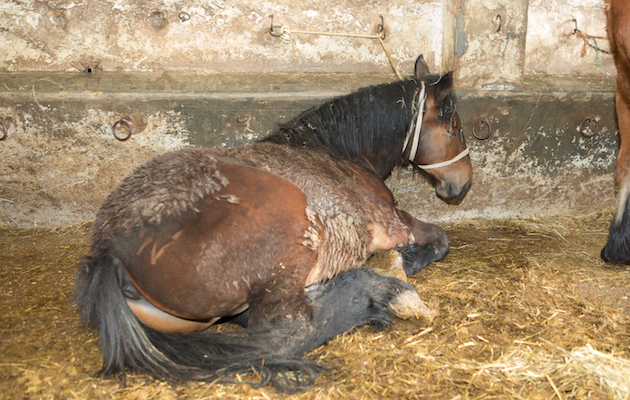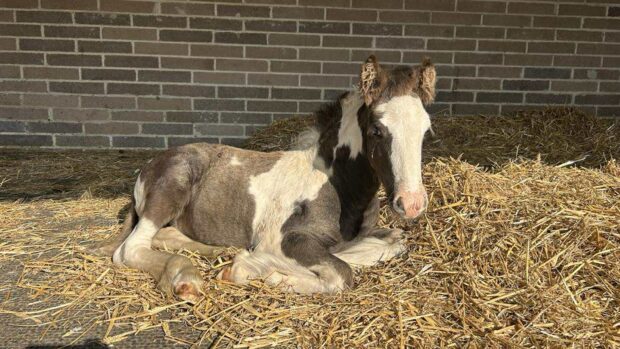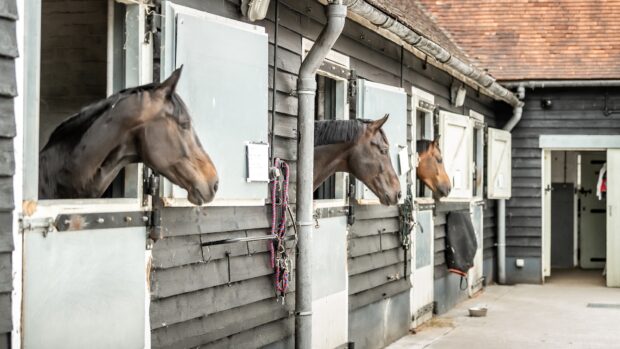H&H and World Horse Welfare went to Europe to follow the route of horses on their final journey to slaughter. Day three took in a control post in Italy.
In another life, the bay stallion at the near end of the first barn could have been something special.
His face is like that of a morbidly obese person; eyes overshadowed by puffs and folds of flesh. But look past the grossly enlarged neck, the unnatural bulges and weak-looking joints, and you can see what he might have been; a bright coat, a carefully plaited mane, a rosette fluttering from a polished bridle, rather than this halter of twisted rope.
Similarly, at the other end of the row, the unusual markings of the dappled, dun-coloured yearling with the black and white mane would attract attention in any yard. He turns his head as far towards us as his rope allows, showing a friendly face and inquisitive eyes. Younger than the stallion, he is not as grossly overweight but is still fatter than he should be at that age. None of these horses are retired working animals; they have been bred for meat, and their price at the market in Poland was three euros per kilogram.
It seems many of them have been reared inside. The signs pointing to almost battery farming are here, in the hardened filth caked to their sides and hanging in balls off their bellies. Some of the tails are solidified balls of faeces; every time one of the yearlings swishes his tail, it hits his neighbour, whose own tail has been cut off above the hocks.
On the other side of the barn is another line of 20 or so horses. Four lorryloads – some 80 horses, as well as 600 sheep – are here at the Prosecco control post, making their 24-hour stop.
Every voice counts: sign World Horse Welfare’s petition here.
In this line, one of the horses irritatedly turns his quarters on his neighbour. The second horse tries to swing away but is brought up short by another horse tied closely to his left, who also half-squeals and tries to kick. None of the three can move away.
In the furthest barn, the horses are quieter, many of them coughing. One is down, eyes half-closed, head held high by the short rope.
A member of staff shows us a stack of passports – one for each horse, and they’re also all microchipped – but they have no names, only numbers.
Back in the first barn, one of the yearlings has broken free from his tether and is wandering about the pen, trying occasionally to nurse on his companions.
Seeing us, he wanders over to the bars, ears pricked, face friendly, leaning out to breathe over us.
“We don’t deserve this,” mutters World Horse Welfare field officer Tony Evans. “He shouldn’t be so friendly.”
The yearling doesn’t know, as we do, that this is the last proper rest for these four loads. They’ll have one more stop, eight hours after they leave Prosecco, but the next time they’re unloaded will be at the Apulia slaughterhouse, 12 to 15 hours’ drive to the south.
It’s bright outside, compared to inside the barns, but as I emerge, I can see the slogan on the side of a freight lorry parked opposite.
“Logistics for a better world,” it says.

Long-distance transport for slaughter: at the horsemeat butchers
Read the first of three blogs about H&H's

Over a million sign petition to stop long distance transport for slaughter
A petition calling for a reduction in journey
Don’t miss this week’s Horse & Hound magazine, out 18 May, for more on the trade and how you can help.




